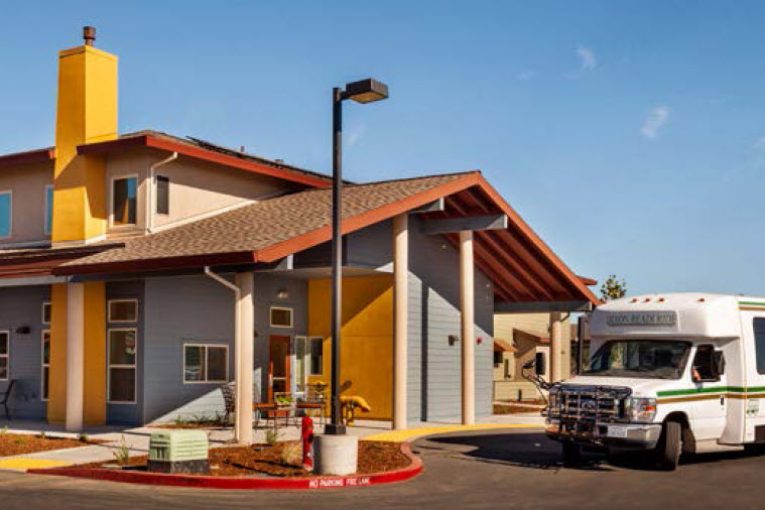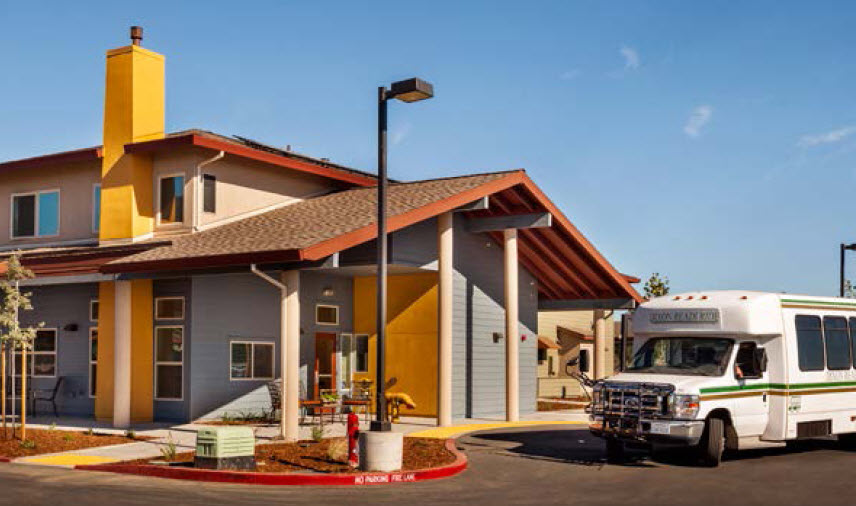

Creekside is the last parcel of affordable housing within the Mace Ranch Development. After languishing for a number of years, the city put out an RFP for the project in 2014. After a competitive process, Neighborhood Partners, partnering with a number of groups including Davis Community Meals, won the project bid in 2015.
The property was originally set aside in the mid 1990s when Mace Ranch was first developed. Creekside will be the third and final affordable housing project in Mace Ranch, following Walnut Terrace and Windmere Apartments.
Creekside, according to David Thompson of Neighborhood Partners, was able to secure $34 million in funding by November. That funding included $11.8 million grant from the state’s Affordable Housing and Sustainable Communities program, which uses revenue from the Cap-and-Trade Greenhouse Gas Reduction Fund to support affordable housing.
The size of the project is now increased to 90 units of affordable housing – which, until West Davis’ affordable project is built, will be the largest in the city.
The developers were able to secure the funding last spring and construction is underway.
and construction is underway.
The Vanguard sat down this week with Bill Pride, director of Davis Community Meals. He explained that the project will be styled after Cesar Chavez, providing a range of housing needs to homeless and formerly homeless individuals.
Of the 90 units of housing, 80 of the units will be a single bedroom with 10 two-bedroom units.
This will be the second housing project that Davis Community Meals has provided supported services for. The Cesar Chavez Plaza was Yolo County’s first permanent supportive housing designed specifically for extremely low income and fixed income homeless individuals living with mental and/or physical disabilities, including chronic substance abuse.
At Creekside, there will be between five to six days of services to individuals with special needs. The services include things like health and hygiene classes, employment assistance, drug and alcohol meetings, and life skills counseling will be available to all residents through Davis Community Meals.
“Our main goal in having those types of programs is to move folks in and hold them there,” Bill Pride explained. “My job there is making sure they get the services they need.”
This is a team effort. The property management will be done by the John Stewart Company while Davis Community Meals, as they have done at Chavez, will provide supportive services.
Part of the challenge will be to provide the services to get people to the point where they are less reliant and more self-sufficient.
Bill Pride said one thing that they have not figured out yet is the process by which people can qualify to live at the site. He said, “That will probably be done around May or June.”
Construction at the site began back on November 26. “The plan is to open at the end of the year,” Bill Pride said, estimating sometime between November 2019 and January 2020.
This is a project that serves extremely low income needs and the units will be set aside for those at roughly 25 percent of median income. They will pay about $380. In a lot of cases, most of the residents are living on SSI which is roughly $880 per month and which gives them just enough to pay for rent and other needs.
In addition, the site includes a 205kW photovoltaic system that will result in a zero net-energy property, allowing residents to pay close to nothing for utilities.
“There are a few folks that are going to need a lot of care,” Bill Pride said, especially at first. “People get the choice to accept services or not accept services.”
He said that their experience at Chavez is that “services are happening sporadically” but “some folks are going to need contact everyday.”
He explained that many of the people living at the site are “folks right off the streets” or “out of transitional housing programs” with many of them either homeless currently or at risk of homelessness. He said that when their rent exceeds 50 percent of their income, they are at risk of homelessness.
Bill Pride added, “I’m just excited to have more housing in Davis.”
He said that, right now, “(the situation) is improving a little bit” and he is pleased that there has been a “real discussion about how to meet the needs of the local population.”
—David M. Greenwald reporting


Do we have any idea how much housing we need for such populations in this community? It seems like doing these projects is an easy way to address a real problem.